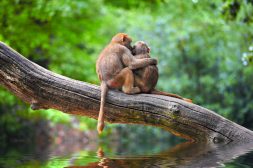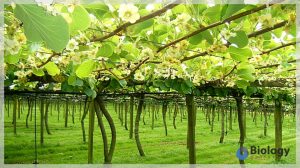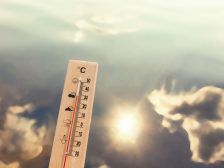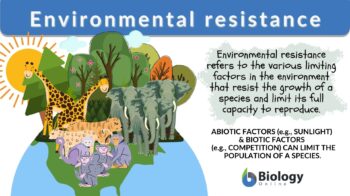
Environmental resistance
n., [ɪnˌvaɪərənˈmentl ɹɪˈzɪstəns]
Definition: the sum of environmental limiting factors of a population
Table of Contents
Environmental Resistance Definition
Environmental resistance is such a process in which certain different elements or factors stop the growth of species uncontrollably. Nature employs certain different factors to regulate the growth of species to minimize the excessive growth of population or overpopulation. (Course, 2021) In biology, the term “environmental resistance” pertains similarly to it. It is associated with certain factors that limit not only the growth of the species but also the rate of reproduction. (Online, 2021)
Define environmental resistance: Environmental resistance is the sum of environmental limiting factors that include both abiotic and biotic factors. Both abiotic and biotic factors work together to stop the biotic potential of an organism. (Encyclopedia.com, 2018)
Environmental resistance factors are those factors that inhibit the population growth and try to maximize the number such individuals that can sustain. Availability of certain necessary resources is the factor of environmental resistance. (Encyclopedia.com, 2021)
These are:
- Food
- Water
- Predation
- Diseases
- Collection of toxic metabolic waste
- Behavioral change in species (stress due to overpopulation)
The environmental resistance factors are either abiotic or biotic. Living factors of the environment are considered biotic. These include fruits, plants, or animals. According to the perspective of environmental resistance, the biotic factors oppose the species growth by parasitism, competition, poisoning, or predation.
Non-living components are considered abiotic factors. It includes rain, fire, or sunlight. In some conditions like fluctuation in temperature, climate, or drought, the elements act against the growth of the population. By adaptability or evolution, the resistance is surpassed.
In some cases, certain species adapt themselves and manage according to environmental resistance. It leads to excessive growth of population. To maintain the balance or proper levels of species, nature acts as a regulator. According to a precept in evolution, certain microorganisms adapt themselves and form more complex structures.
Environmental resistance is a resistance presented by the environmental conditions to limit a species from growing out of control or to stop them from reproducing at a maximum rate. It includes both abiotic factors (e.g., temperature) and biotic factors (e.g., biological control agents) to limit the organism from expressing its full capacity to reproduce.
Biotic Potential
The biotic potential is defined as the capability of the population of a certain species to proliferate under ideal and perfect environmental conditions. These conditions include:
- Excessive supply of food
- No disease
- No predators
Two primary factors regulate the biotic potential. These are:
1. Organism rate of reproduction
2. Litter size (number of offspring produced in single birth)
There is variation in biotic potential from one species to the other. In humans and many other mammals, one offspring is produced in a year but contrary to this, certain insects give birth to multiple insects in a year. Therefore, it is said that there is lower biotic potential in large organisms as compared to smaller ones. (Canoy, 2017)
Biotic potential and environmental resistance | |
|---|---|
| Biotic Potential (Growth factor) | Environmental Resistance (Decreases factor) |
| Favorable temperature, light | Excessive or lower than normal level of temperature and light |
| High rate of reproduction | Lower rate of reproduction |
| An adequate supply of food | Inadequate supply of food |
| Ability to migrate habitats | Inability to migrate habitats |
| Can adapt to the changes of environment | Cannot adapt to the changes of environment |
Environmental Resistance Examples
The different biotic potential of an organism attributed to certain factors like:
- The survival rate of offspring
- Frequency of reproduction
- Reproductive lifespan
For Example:
If we consider the average reproduction rate of certain species then we conclude that spiders produce hundreds of offspring at a time. Dogs and cats produce four to eight offspring at a time whereas humans produce only one to three offspring at a time.
There are some poisonous plants in a forest that may cause the death of anyone that consumes them. But such plants are vulnerable to too much sunlight and could die from excessive sunlight exposure. So, nature keeps the balance by implementing environmental resistance. The sunlight prevents unnecessary plant growth. So, the light from the sun, in this case, is a factor that helps keep the ecosystem. However, if a person adds more poisonous plants to the environment, this will affect the ecosystem. (Course, 2021)
The predator-prey relationship and availability of water are also common examples of environmental resistance. The number of predator-prey in an environment also contributes to environmental resistance. The prey population increases if the number of predators is low.
READ: Population Regulation in an Ecosystem – Biology Online Tutorial
For growth, water is one of the basic and necessary needs. In an ecosystem, if the producers do not grow then there will not be sustainability in the consumers. (Canoy, 2017)
Carrying Capacity
Carrying capacity is defined as the maximum number of the population in an ecosystem that can withstand indefinitely. The population can sustain without getting declined or reduced due to deterioration and damage.
Carrying capacity gets affected by two factors.
1. Biotic Potential
2. Environmental Resistance
The graph explains the carrying capacity of the ecosystem. The carrying capacity is the part of the graph in which population plateaus. This is the point at which the rate of replenishing resources is equal to the number of newborn individuals in the ecosystem.
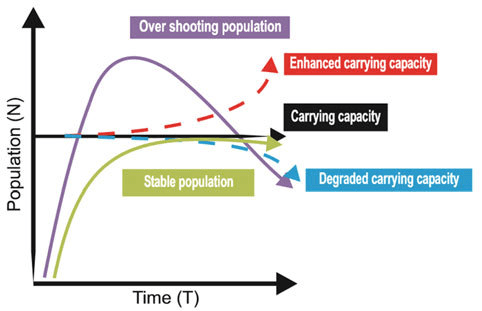
If the population increases then the carrying capacity of the environment is termed as overshoot. Reproductive lag time is the main reason for the overshoot. Reproductive lag time is defined as the time in which the rate of birth decreases and the rate of death increases. The difference in the birth and death rate is due to limited resources.
When such a situation occurs, there is a collapse in the population. It can also be said as dieback. As the sources and space get limited, a large number of individuals start the migration from areas of fewer resources to such an area where adequate resources are available. When the number of individuals in a population gets lower as compared to the carrying capacity, then the number of resources starts to get sustained according to the population’s needs. (Canoy, 2017)
Watch this vid below for an example of environmental resistance
Try to answer the quiz below to check what you have learned so far about environmental resistance.
References
- Canoy, W. Z. (2017). Biotic Potential and Environmental Resistance. Retrieved 28 Nov, 2021, from https://www.facebook.com/notes/earth-and-life-science/102-biotic-potential-and-environmental-resistance/2006815826221730/
- Course, M. A. (2021). What is Environmental Resistance. Retrieved 28 Nov, 2021, from https://www.myaccountingcourse.com/accounting-dictionary/environmental-resistance
- Encyclopedia.com. (2018). environmental resistance. Retrieved 28 Nov, 2021, from https://www.encyclopedia.com/earth-and-environment/ecology-and-environmentalism/environmental-studies/environmental-resistance
- Encyclopedia.com. (2021). environmental resistance factors. Retrieved 28 Nov, 2021, from https://www.encyclopedia.com/science/dictionaries-thesauruses-pictures-and-press-releases/environmental-resistance-factors
©BiologyOnline.com. Content provided and moderated by Biology Online Editors.

